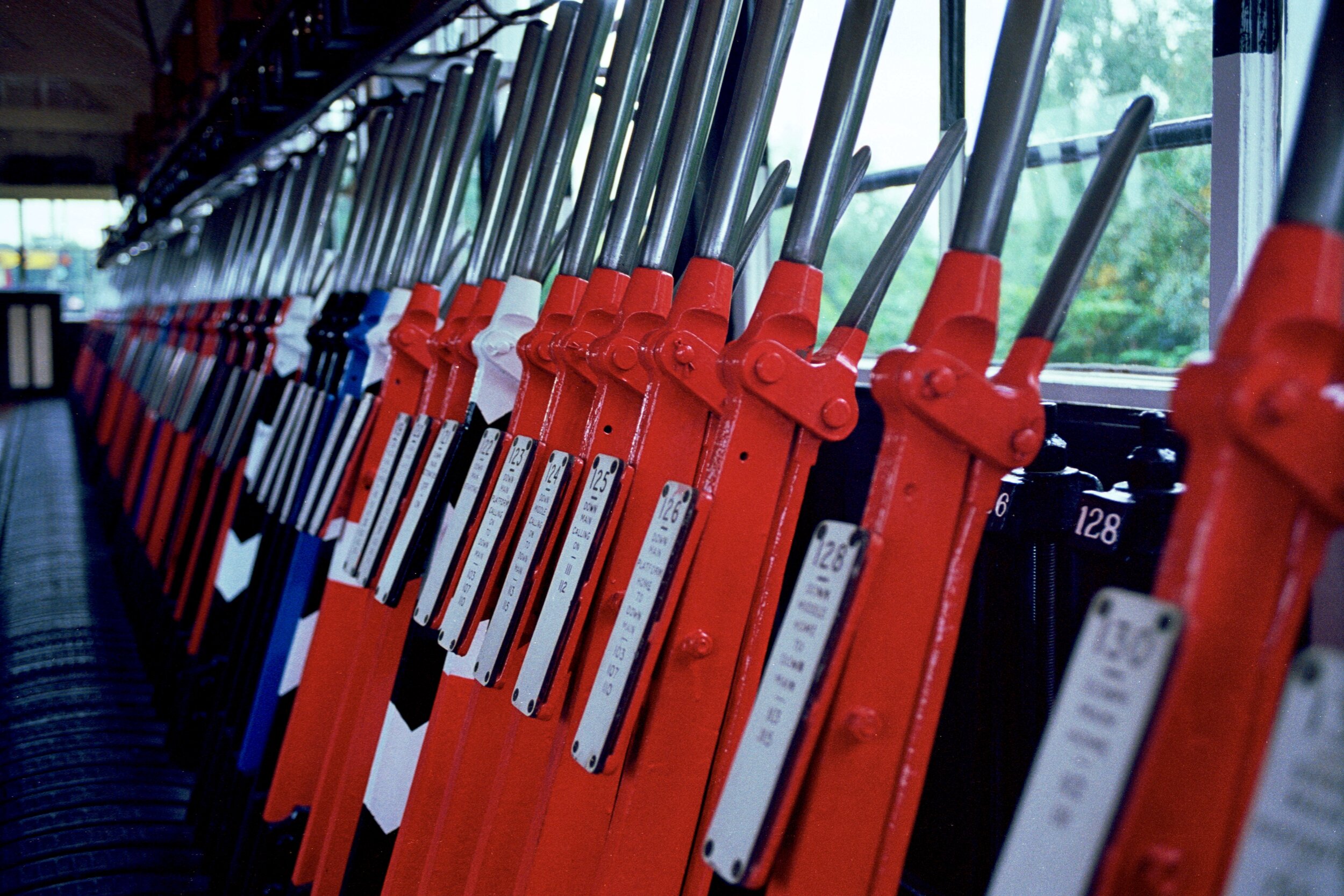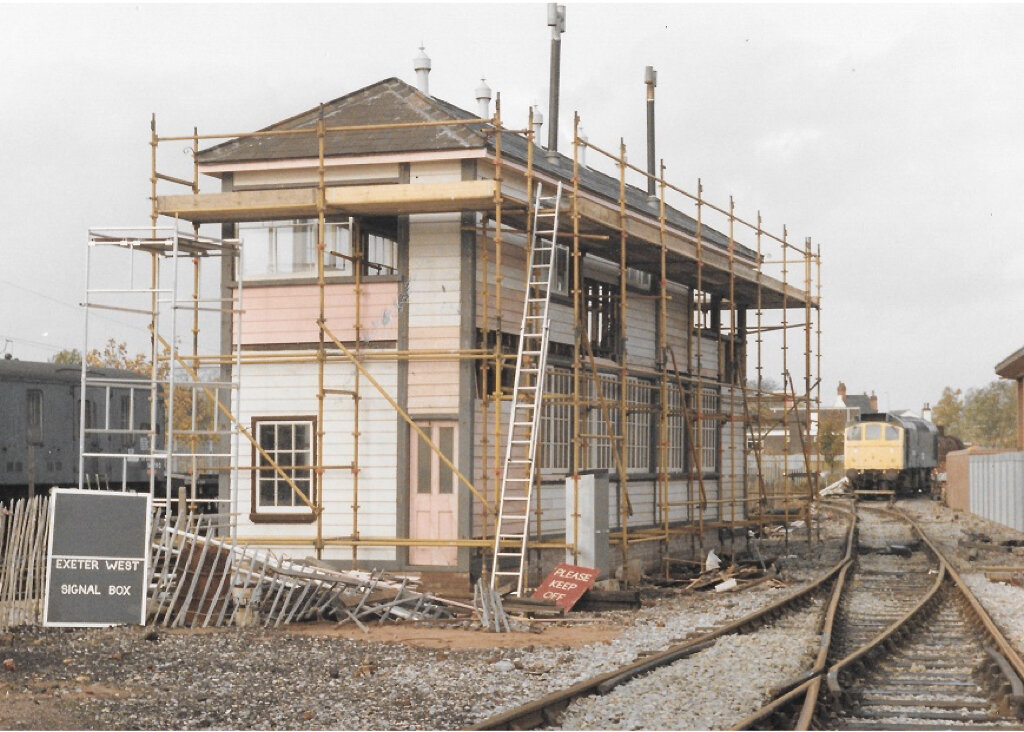
Virtual Museum
Exeter West Signal Box
Exeter West Signal Box was originally built as a temporary structure by the Great Western Railway in 1913 following the enlargement of Exeter St. David’s station It was located to the west of the station, controlling the junction for the London & South Western Railway's line to Waterloo and connections to the goods lines avoiding the station, the engine shed and various yards.
The signal box contained a lever frame of 114 levers, but this was replaced in 1959 by an even larger new frame of 131 levers. The box remained in use until 1985, when colour light signalling controlled electrically from a new signal box at Exeter was brought into use. After closure of Exeter West in 1985, the Exeter West Group moved in and dismantled the signal box, marking each of the hundreds of parts for future reference.
The Signal Box at its original location in Exeter
Dismantling the Signal Box in 1985
At first, all of the parts were moved to Bristol and a start was made on restoring the box to be a feature at Temple Meads station. However, by summer 1988 it was clear that this project had foundered, but a home was offered at the proposed Swindon Heritage Centre. Everything was moved there, and restoration work continued until 1990. However a seemingly indefinite postponement of the heritage project at Swindon made it necessary to seek another site.
Finally a home was found here at Crewe. Having moved all of the many parts, a start was finally made on the complex task of putting the box back together again in May 1991, the structure was complete and weatherproofed by the end of that year, and the Internal rebuilding continued through 1992. The signal box was formally opened to the public on May Day 1993.
Rebuilding the Signal Box at the Crewe Heritage Centre in 1992
The leaver frame inside the Signal Box




